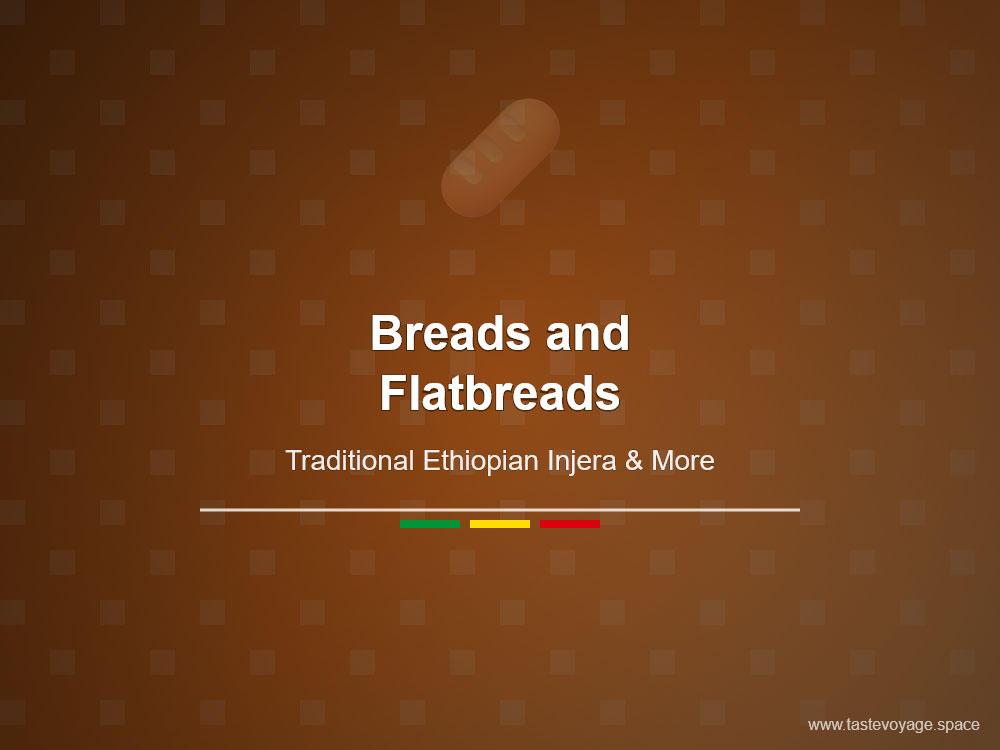Easy Homemade Ethiopian Injera Recipe | Sourdough Teff Bread
Travel the World Through Food >> Breads and Flatbreads>>Ethiopian Cuisine>> Easy Homemade Ethiopian Injera Recipe | Sourdough Teff Bread
Easy Homemade Ethiopian Injera Recipe | Sourdough Teff Bread
Easy Homemade Ethiopian Injera Recipe (Sourdough Teff Bread): Celebrating a Culinary Tradition
Ethiopian cuisine is renowned for its bold flavors, vibrant colors, and unique culinary techniques. Among its most iconic dishes is injera—a sourdough flatbread that forms the foundation of many traditional meals. This bread is much more than just a staple; it is a symbol of Ethiopian hospitality, culture, and culinary ingenuity.
The Cultural Significance of Injera
Injera holds a special place in Ethiopian culture. It serves as both a plate and a utensil, with diners tearing off a piece to scoop up stews and vegetables. This communal eating style fosters a sense of togetherness and shared experience at the dining table. The preparation of injera is often a communal activity, passed down through generations, reinforcing cultural bonds and culinary traditions.
More than just food, injera is a reflection of Ethiopia’s history and identity. Its distinctive sour flavor results from a traditional fermentation process that has been perfected over centuries. This process not only enhances the bread’s taste but also connects Ethiopians to their land and history. The use of teff—a tiny, nutrient-dense grain indigenous to the Ethiopian highlands—further emphasizes the deep-rooted connection between the dish and the region’s natural resources.
Culinary Significance of Injera
Injera is celebrated for its unique texture and flavor profile. Its spongy, airy structure makes it ideal for absorbing the flavors of accompanying dishes. The slightly tangy taste, arising from natural fermentation, balances spicy stews and rich lentil dishes, creating a harmonious culinary experience.
Injera’s versatility extends beyond its role as a bread. It can be used as a serving dish, a utensil, or even as a base for various toppings and fillings in modern adaptations. Its distinctive appearance, with a characteristic bubbly surface and slightly tart aroma, makes it instantly recognizable and highly cherished in Ethiopian kitchens.
The Art of Making Injera
The traditional preparation of injera involves fermenting teff flour with water over several days. This fermentation process develops the bread’s signature sourness and creates the bubbles and holes that make injera so special. The batter is then poured onto a hot griddle and cooked until it forms a thin, soft, and pliable flatbread.
While many enjoy making injera at home, it is often crafted with care and patience—an art that reflects the cultural importance of the dish. With modern methods, those interested in exploring Ethiopian cuisine can now create authentic injera that preserves its traditional essence.
Embracing a Culinary Heritage
Learning to Make injera at home is more than just a cooking project; it is a journey into Ethiopian cultural heritage. This dish invites us to appreciate a centuries-old culinary tradition and to experience the rich flavors that define Ethiopian cuisine. Whether served at a family gathering or enjoyed as a new culinary adventure, injera offers a taste of Ethiopia’s vibrant food culture.
In conclusion, injera is a remarkable representation of Ethiopia’s culinary artistry. Its cultural significance and distinctive flavors continue to inspire food lovers worldwide. Embrace the tradition, celebrate the history, and enjoy the unique experience of this sourdough teff bread—an authentic symbol of Ethiopian gastronomy.
